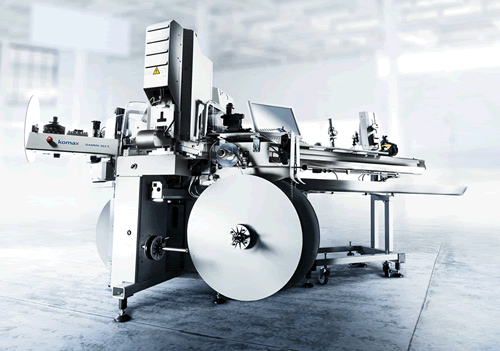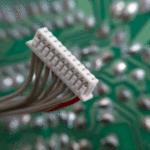Five Things to Know About Automatic Crimping Machines
When every penny counts, manufacturers look to wire processing equipment suppliers to help cut production costs and improve the cost per lead. To assist in your next equipment purchase, Komax offers five things to know about automatic crimping machines.

Komax Wire’s fully automatic crimping Gamma 263S
In today’s competitive business environment, wire harness manufacturers are winning contracts by the penny. When every penny counts, manufacturers look to wire processing equipment suppliers to help cut production costs and improve the cost per lead. With more and more OEMs requiring suppliers to meet quality standards such as the IPC/WHMA-A-620 and SAE AS7928 (for aerospace), wire crimping is always a hot topic in the wire processing industry. Every company should understand five key factors before purchasing an automatic crimping machine.
Understand Your Production Volume
A quick Internet search for wire crimping machines will return a number of potential suppliers with diverse product offerings. Machines that range from semi-automatic loose-piece crimping to fully automatic measure, cut, strip, and terminate are all available in the marketplace. But how do you know which crimping machine to choose? It’s important to run a production analysis of all current jobs to better understand the number of crimps required for each. From there, a company can consult with an applications or sales engineering specialist to determine the cost savings between semi-automatic and fully automatic machines.
Understand Current and Future Applications
Product innovation, especially in industries such as automotive, military, and aerospace, is a main contributor to an OEM’s long-term sustainability. As products and applications evolve, so will the wire harness requirements of the customer. How will these application changes affect future production requirements? In regard to fully automatic crimping machines, the flexibility of the machine should act as a defining characteristic for a typical contract manufacturer. Double crimping, MIL crimping, ferrule crimping, tinning, and seal insertion are all common applications among North American OEMs.
As different industries possess different challenges, customers should plan accordingly to meet these requirements on an open-platform crimping machine. Customers should always think of the future and how their crimping machine will meet the needs for business in five years and beyond.
Choosing the Right Supplier
Customer and technical service should be available to buyers who purchase capital equipment. As many customers rely on one fully automatic crimping machine for all their production needs, technical service is critical in the instance a machine stops running. Some suppliers train and certify their technicians across all products while others train technicians only for specific product categories. Make sure to perform the due diligence and understand the service structure of the supplier and credentials of each service technician.
Quality is King
One of the fastest ways to cut costs is to reduce unnecessary scrap material. Crimp force analyzing (CFA) software is able to detect inaccurate strip lengths, missing strands, crimp height, and insertion depth. While many companies today may not utilize CFA, making the necessary changes to incorporate CFA may pay dividends on a small investment, as you reduce the number of faulty crimps and save on your manufacturing costs.
Robustness and Durability of the Product
Not all crimping machines are alike, and when it comes to the accurate repeatability of wire crimps, quality matters. Word-of-mouth referrals are usually the most dependable in determining the accuracy of a supplier’s marketing message while identifying the strengths and weaknesses of the machine. Be prepared to ask key questions such as what kind of feasibility testing the machine has endured prior to product launch. A low-priced, low-quality machine may look great on paper, but the potential problems, such as crimp repeatability, in an aging machine may affect its long-term ROI.
In all, there are many more factors a potential customer and current wire harness manufacturer should identify when evaluating their automatic crimping processes, including wire type and quality, applicator, and the weather environment. An automatic crimping machine is a long-term investment and every business should look at its current production needs as well as its future capabilities.
Zachary Kozak is the marketing and communications analyst at Komax Wire.







